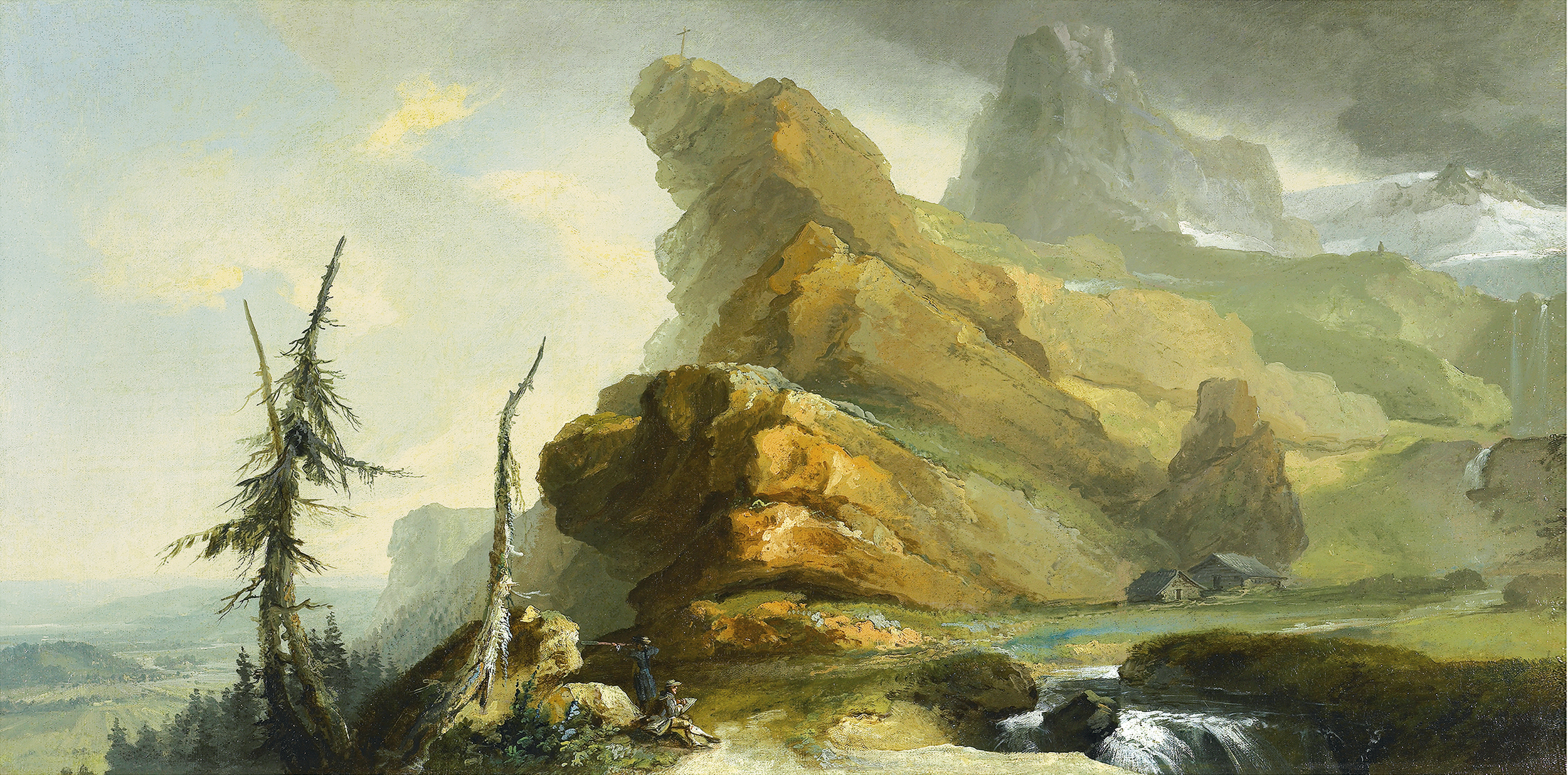Considered a precursor of European alpine painting, Caspar Wolf occupies a major place in the history of art. For the first time, his paintings offer mountains as the central, unique subject of the composition and not merely as background.
Following an apprenticeship in southern Germany and a subsequent stay in Paris (1769-71), where he makes the acquaintance of the painters Philippe-Jacques Loutherbourg and Joseph Vernet, Wolf gradually turns away from decorative commissions – stoves and wallpaper – to focus on landscape painting. Inspired by Albrecht von Haller and his brilliant poem Die Alpen, published in 1732, Wolf makes mountains a geographic reality for viewers.
His work is immediately noticed by the Bernese printer and publisher Abraham Wagner. Along with a circle of scientists, the two men explore an alpine world that has sparked little interest until then. The scientists recognise in the painter the only one capable of recording an exact observation. Yet Wolf meets with no success in his lifetime and his oeuvre is soon forgotten after his death in 1783. Long considered lost, his paintings are rediscovered in 1940 and an initial show is put together in 1948 in Aarau. Since then, important groups of his works have entered the major Swiss collections, including the Kunsthaus, Aarau; the Kunstmuseum, Basel; and the Oskar Reinhart Foundation, Winterthur.
Following an apprenticeship in southern Germany and a subsequent stay in Paris (1769-71), where he makes the acquaintance of the painters Philippe-Jacques Loutherbourg and Joseph Vernet, Wolf gradually turns away from decorative commissions – stoves and wallpaper – to focus on landscape painting. Inspired by Albrecht von Haller and his brilliant poem Die Alpen, published in 1732, Wolf makes mountains a geographic reality for viewers.
His work is immediately noticed by the Bernese printer and publisher Abraham Wagner. Along with a circle of scientists, the two men explore an alpine world that has sparked little interest until then. The scientists recognise in the painter the only one capable of recording an exact observation. Yet Wolf meets with no success in his lifetime and his oeuvre is soon forgotten after his death in 1783. Long considered lost, his paintings are rediscovered in 1940 and an initial show is put together in 1948 in Aarau. Since then, important groups of his works have entered the major Swiss collections, including the Kunsthaus, Aarau; the Kunstmuseum, Basel; and the Oskar Reinhart Foundation, Winterthur.
